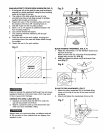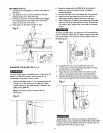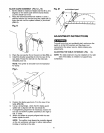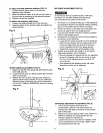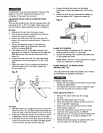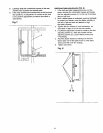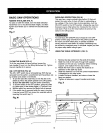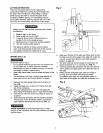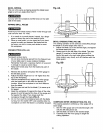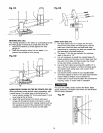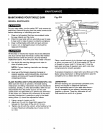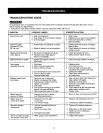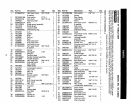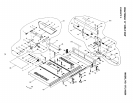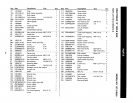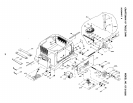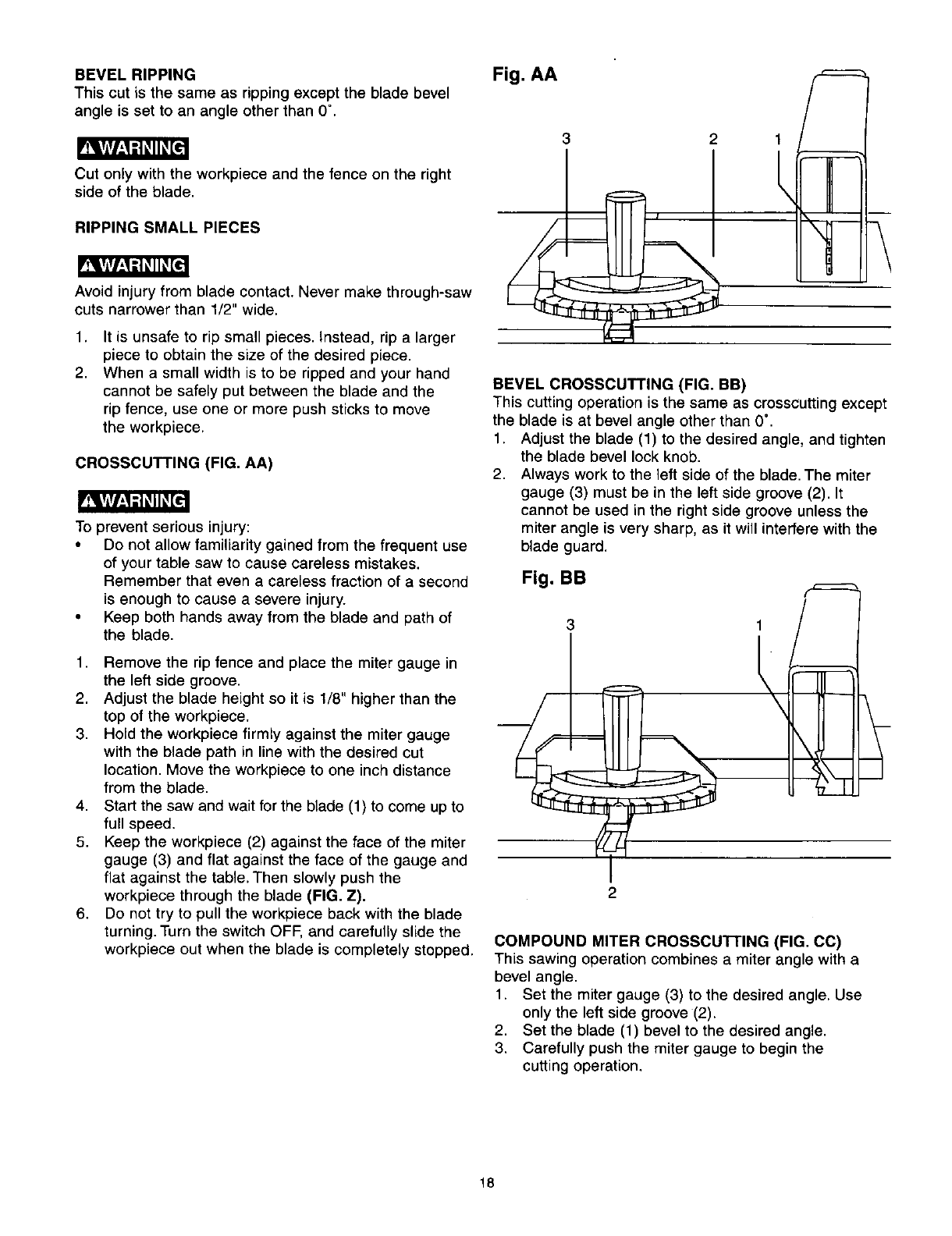
BEVEL RIPPING
This cut is the same as ripping except the blade bevel
angle is set to an angle other than 0°.
r,._kVlV/_,1d _,II_,[_
Cut only with the workpiece and the fence on the right
side of the blade.
RIPPING SMALL PIECES
Avoid injury from blade contact. Never make through-saw
cuts narrower than 1/2" wide.
1.
2.
It is unsafe to rip small pieces. Instead, rip a larger
piece to obtain the size of the desired piece.
When a small width is to be ripped and your hand
cannot be safely put between the blade and the
rip fence, use one or more push sticks to move
the workpiece,
CROSSCUTTING (FIG. AA)
To prevent serious injury:
• Do not allow familiarity gained from the frequent use
of your table saw to cause careless mistakes.
Remember that even a careless fraction of a second
is enough to cause a severe injury.
• Keep both hands away from the blade and path of
the blade.
1
2.
3.
4,
5.
6.
Remove the rip fence and place the miter gauge in
the left side groove.
Adjust the blade height so it is 1/8" higher than the
top of the workpiece.
Hold the workpiece firmly against the miter gauge
with the blade path in line with the desired cut
location. Move the workpiece to one inch distance
from the blade.
Start the saw and wait for the blade (1) to come up to
full speed.
Keep the workpiece (2) against the face of the miter
gauge (3) and flat against the face of the gauge and
flat against the table. Then slowly push the
workpiece through the blade (FIG. Z).
Do not try to pull the workpiece back with the blade
turning. Turn the switch OFF, and carefully slide the
workpiece out when the blade is completely stopped.
Fig. AA
2
BEVEL CROSSCUTTING (FIG. BB)
This cutting operation is the same as crosscutting except
the blade is at bevel angle other than 0°.
1. Adjust the blade (1) to the desired angle, and tighten
the blade bevel lock knob.
2. Always work to the left side of the blade. The miter
gauge (3) must be in the left side groove (2). It
cannot be used in the right side groove unless the
miter angle is very sharp, as it will interfere with the
blade guard.
Fig. BB
2
1
,J/-------
\Pt
I.V.
]\ _-r"
h
COMPOUND MITER CROSSCUTTING (FIG. CC)
This sawing operation combines a miter angle with a
bevel angle.
1. Set the miter gauge (3) to the desired angle. Use
only the left side groove (2).
2. Set the blade (1) bevel to the desired angle.
3, Carefully push the miter gauge to begin the
cutting operation,
18



